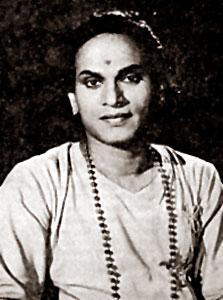History Of Tamil cinema
Tamil cinema is a industry located in Chennai, India, which produces feature films in the Tamil language. Most of the movie studios are located in Kodambakkam.It also referred to as Kollywood. Moving pictures have been exhibited in Chennai from 1882 onwards.
An European exhibitor first screened a selection of silent short film at “Victoria Public Hall” in Chennai.The “Electric Theatre” was established for the screening of silent films. Then the “Lynic” theatre was also built in Mount Road area. This venue boasted variety of events as Play in English, Western Classical Music, Concerts and also Ball dance and as additional attraction silent film was also screened.

The year marked the birth of the Silent Film in Tamil Nadu, the precursor to the modern day Tamil Cinema, as we know it. R.Nataraja Mudaliar was the first producer, director and cinematographer in media field . He Trained in London, he came back and made Keechaka Vadham in 1917, the first Silent feature film in Tamil.
In 1930’s AVM set up its studio”Independent Tamil Film Production “ in places outside India including Sri Singapore, Canada and Europe. Tamil films were also made in Sri Lanka where Tamil is one of the official languages since ancient.
Some films featuring M.K.Thyagaraja Bhagavathar was shot in these cities in 1935. A.Ramiah from Thanjavur established the first studio Star Combines in Kodambakkam.

On October 31 1931, the boxes carrying the reels of the first ever Tamil talkie film arrived at the Madras port and it was escorted to the Liberty. The fact remained that Kalidas was not a fully Tamil talkie film; many characters spoke different languages in the film, of which Telugu was a major part. Therefore, the 1932 film Galava directed by P.P. Rangachari is recognized as the first full length Tamil talkie film.
The period from 1945-1950 can also be marked as the one where dialogues rose in prominence in Tamil cinema. Yes, talkie cinema had come to Tamil in the 1930s, but it took the advent of literary geniuses like Annadurai and M.Karunanidhi to take cinema dialogues to new and great heights.
Nepali Cinema often called as Kollywood. Hence there exists some kind of identity debate especially in Nepali Cinema. Tamil Cinema is comparatively a very large industry in comparison to Nepali Cinema industry.
Finally, as we remember the great architects who laid the foundations of Tamil cinema and thank them for what they did, we can also remind ourselves of the tribute that we can pay them. We can start by reiterating the fact that no print of Kalidas, the first Tamil talkie film, is known to exist. And, the same can be said of almost all the films of that period; yes, there are exceptions. In contrast, look at Hollywood archives, a 1930s film can still be downloaded on the net.

The Future of Online News Portals
These days, you can do a lot of things by just going online such as shopping, paying bills, communicating with friends, sharing documents, listening to music, and watching videos, to name a few. The internet is also the easiest and fastest way to access information, which is why many people go to their computers and connect to the internet when they want to get news from all over the world.

Watching news on TV and reading newspapers may still have their merits but you cannot deny the many advantages of getting your news online. In fact, print newspapers and TV news stations all over the world now have their own websites where people can access news. It has even been said that newspapers will soon become obsolete once every person has easy access to the online world.
The future of print newspapers may not be clear but the same thing cannot be said about the future of online news portals.
• Subscribing to news portals Some newspapers, like the Financial Times in the UK, are now charging their customers for news subscription. If you want to get unlimited access to their news portal, you only need to pay $3.59 per week. You can still read 10 articles every month for free if you do not want to pay the fee. However, charging for online subscriptions may not work for newspapers that offer objective news reports.
Look at it this way. People who read the Financial Times are willing to pay a fee to get useful financial news which can help them make smart decisions when it comes to investing their money. They are willing to pay because they are expecting to get something in return. On the other hand, newspapers that offer objective current events only keep people informed and there are many websites that offer the same objective news for free.
• People who read newspapers continue to shrink in number

There are only three kinds of people who read the newspaper—people who do not have access to computers, people who do not want to stare at computer screens for long periods of time, and people who do not know how to operate computers. Before, the easiest option to get news is to have a newspaper delivered at your doorstep. This is no longer the easiest, not to mention cheapest, option when the internet entered the scene.
• Finding a niche If you want to thrive in this era where free information is easily accessible, you should find a niche or create one where you will dominate. Take the Financial Times for instance. They dominate a niche, and that is providing up to date latest news content and information to their subscribers, which makes it okay for them to charge their subscribers. You should find or create a niche that has not been filled up before if you want your news portal to succeed. However, be sure to create a niche that many people are interested in. Do not try to fill in a niche that people do not really care about, such as taking care of slugs or something.

